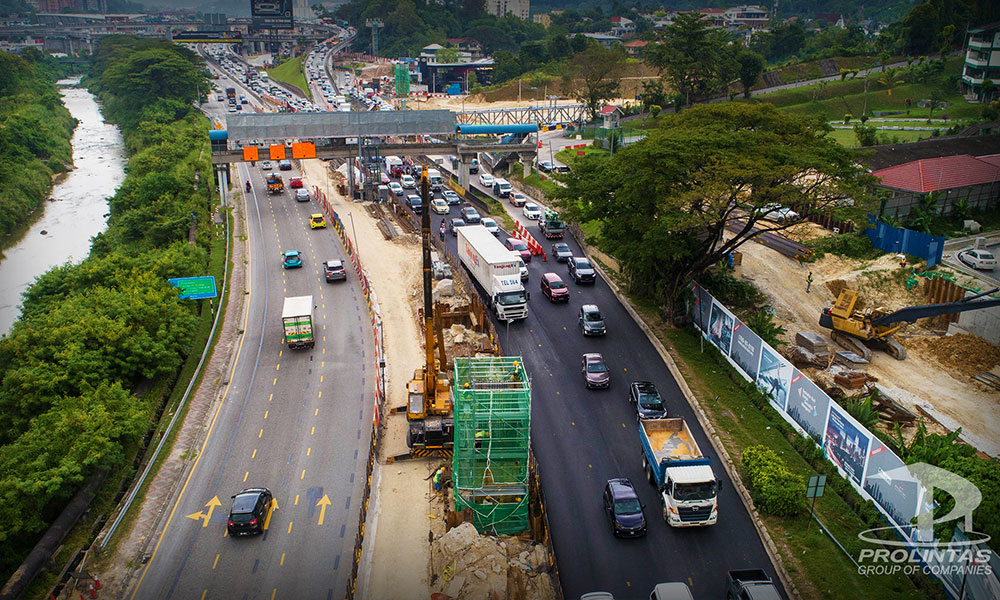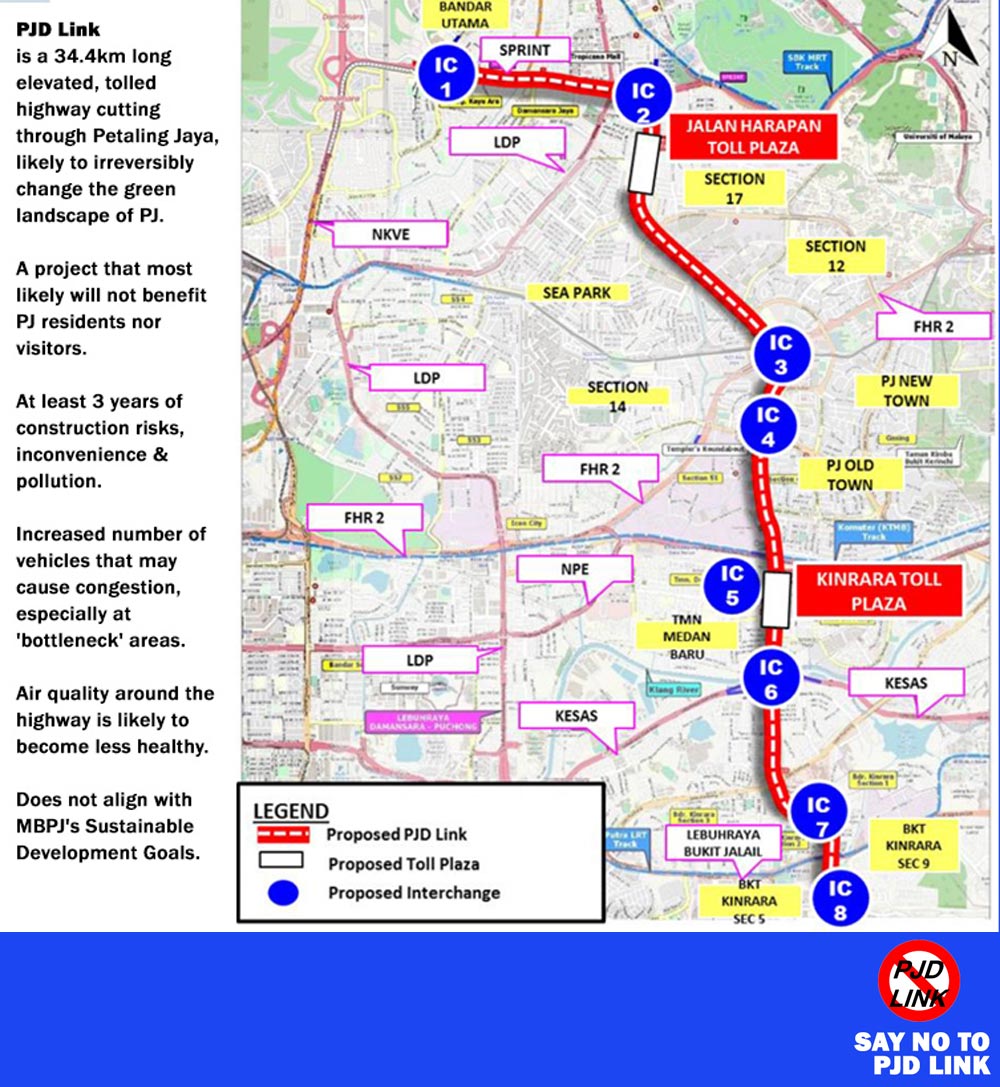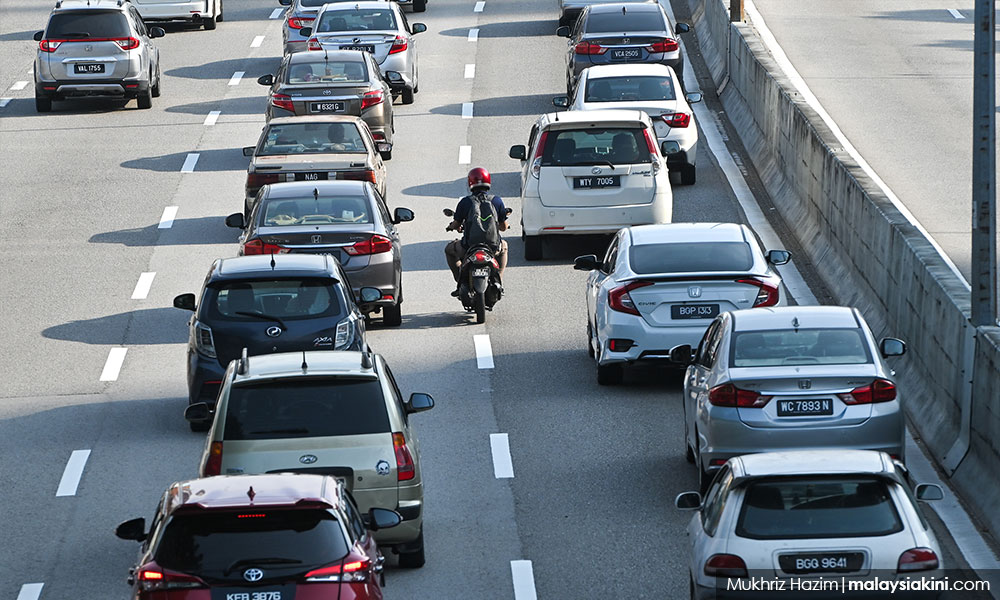Works Minister Fadillah Yusof revealed recently that the federal government had approved several proposals from private companies to build new highways in Klang Valley.
One of these is the Petaling Jaya Dispersal Link (PJDL), a tolled elevated highway cutting across and over compact parts of PJ city.
What are the preliminary findings or detailed traffic studies that led to the decision that Petaling Jaya even needs a “congestion relief“ measure in the form of an urban highway cutting through its densely built core?
Has the Works Ministry or the private developer disclosed any survey data on traffic patterns and vehicular volumes currently running in and through the city?
Private Finance Initiative (PFI)
“Privately funded” projects are never really funded privately. For highway infrastructure projects like PJDL, the funding comes eventually from toll collections over long periods of concessions, the terms of which are never revealed. Toll payers foot the bills.
PJDL was proposed by one monopoly developer. There was no open, transparent and competitive tender. If any efforts were made to achieve the most optimised standards and costs, these were not disclosed to the public.
Some opposition politicians in the past have echoed objections to these PFI initiatives on account of cronyism practices and other alleged departures from accepted norm practices.
Notwithstanding this, in reality, it is challenging and difficult to determine with accuracy the construction costs of massive infrastructure projects such as PJDL, reported to be 34.3km long (including on/off ramps at interchanges).

Underlying soil or rock strata vary greatly along its route. Uncharted underground services and their diversions pose another set of unknowns. Only limited information may be derived from soil investigation probes.
Handling existing traffic and safety of road users immediately next to heavy construction activities, upkeep and maintenance of existing roads, and building elevated decks sailing over existing flyovers, LRT lines and TNB high-tension cables additionally pose challenges to the developer in terms of time and related costs management.
Hence any developer will buffer up huge contingency costs to cater for unforeseen variables during construction. It is a myth that privately funded projects will deliver with certainty the most effective cost savings plan or work implementation ecosystem.
It is misleading for a competent and responsible government to adopt and justify PFI practices purely on account that the government does not have to come up with any funding. The rakyat suffers the impact of such inept practices for generations to come.
If at all adopted, the only viable alternative is for the government to play a greater role in formulating a needs-based master blueprint for development with guidelines and specifications, based on which open tender must be called and assessed independently based on merits.
Dense mature city
Running a highway through a dense mature city and channelling traffic both onto and out of the highway through interchanges with direct (no buffer) links to existing local roads is simply suicidal.
One route alignment option proposed by the developer and sighted by residents shows interchange ramps running in close vicinity of existing hospitals and schools. Ramps have to be constructed either in green belts within existing road reserves or run in existing road medians, thereby forcing on-ramp and off-ramp traffic to interlace with or interrupt movements of vehicles travelling on existing fast lanes.

Substantial segments (estimated to be about 3km long) run in the river reserve of existing Sungai Penchala, which will cause a reduction of waterway flow capacities, increased silting and piling up of rubbish. Many other stretches squeeze between existing commercial buildings with less than 3m distance separating them.
These proposals are the most inefficacious engineering solutions one can imagine. They make a mockery of town planning principles and practices, and the reversal of road hierarchy (connecting highway traffic directly onto local roads without buffer links) is a surefire formula for causing more traffic jams.
Instead of relieving traffic, existing local roads, junctions and intersections, especially those leading to and from the interchanges, will be choked up.
Public transportation vs highways
Calls have been made by many sectors for greater emphasis on providing better public transportation. The National Transport Policy 2019 – 2030 set the vision and pace anchored on sustainable transport.
In the past, the Works Ministry has argued that there remains 40 percent - 60 percent of road users who will still prefer to drive their own cars to commute. Some may be goods vehicles (vans, trucks, lorries). If highways must still be built on these justifications, what happened to the old trusted “outer ring road” concept?
There are alternative ring-around routings which will connect both ends of the proposed PJDL alignment, running in a similar predominantly north-south direction, without having to bludgeon through the built-up city. Spare the environment, avoid displacing existing home dwellers, stop depreciating PJ property values – in short, do not build incisive and invasive highways through Petaling Jaya.

Within the city itself, localised relief measures are adequate to resolve specific chokepoints, currently centred on a few local arterial thoroughfares where vehicles get into the NPE (New Pantai Expressway), heading towards PJ South, or along the LDP heading north.
Old trusted solutions using short spans above-grade bridges (commonly known as flyovers) or underpasses (tunnels) will suffice. There is no need to construct a massive highway throughout the entire city. (These solutions should rightly fall under the jurisdiction of the Selangor state government and the MBPJ city council. Discussions on these will be addressed in a separate article.)
The works minister is urged to look at the science, look at the engineering. The welfare and living well-being of a mature city and its dwellers must not be gambled away on uncertain solutions pre-qualified by admission statements of “no guarantee” for their effectiveness. - Mkini
DAVID YOONG is a who has practised engineering in his own consultancy for 40 years.
The views expressed here are those of the author/contributor and do not necessarily represent the views of MMKtT.



No comments:
Post a Comment
Note: Only a member of this blog may post a comment.